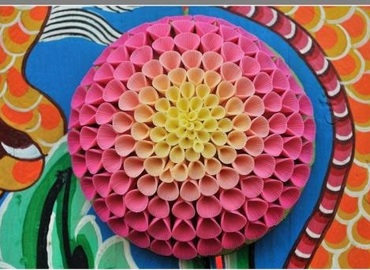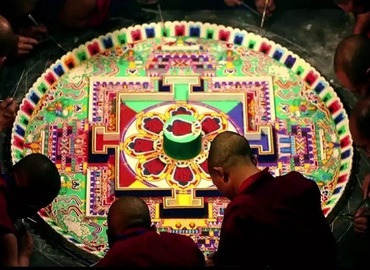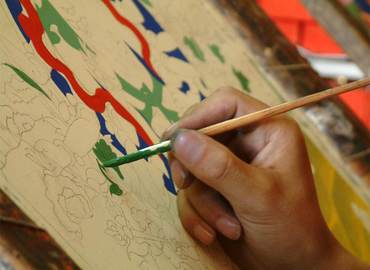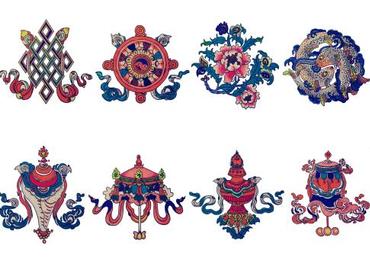Tibetan Art
- Eric
- Last Updated : 12/08/2025
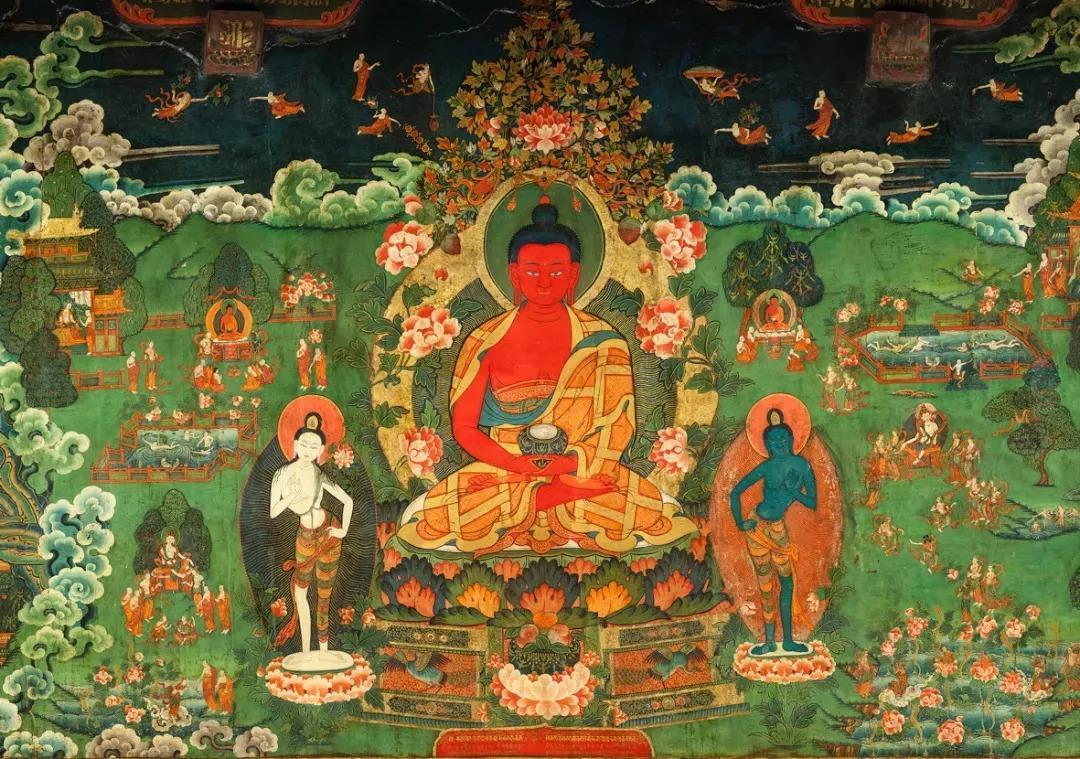
The culture and art of Tibet have a long history and strong ethnic and regional characteristics. Tibetan art is closely related to religion. Tibetan Buddhism culture is the main body of Tibetan culture and arts. It has been 5,000 years since its origination and development. If you travel to Tibet, you will find Buddhist colors and symbols everywhere. Tibetan artworks feature many auspicious patterns, such as patterns of Buddhist items, with a certain symbolic meaning. The art forms include Tibetan murals and frescoes, Thangka, Tibetan Butter Sculpture, Sand Mandalas, and Tibetan Cliff and Rock Carving, etc. Those artistic expressions help tourists know more about the mysterious Tibet.
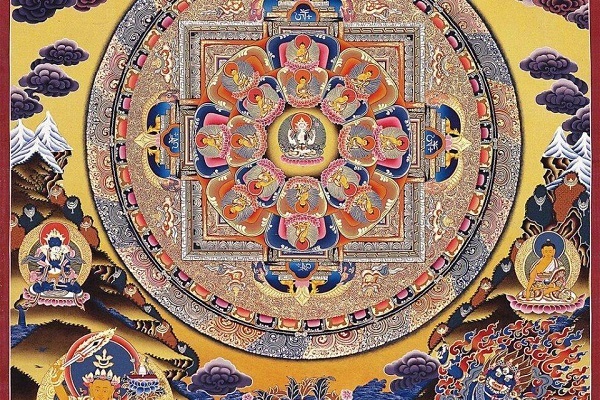 Thangka is a unique painting art form of Tibetan culture. Its subject involves history, politics, culture, and various fields of social life. So Tangka could be regarded as the encyclopedia of the Tibetans. As for the content, it's mainly about Tibetan religion, history, culture, art, science, and technology, which embody the faith and wisdom of the Tibetan people and record civilization, history, and development. >>See more about Tibetan Thangka
Thangka is a unique painting art form of Tibetan culture. Its subject involves history, politics, culture, and various fields of social life. So Tangka could be regarded as the encyclopedia of the Tibetans. As for the content, it's mainly about Tibetan religion, history, culture, art, science, and technology, which embody the faith and wisdom of the Tibetan people and record civilization, history, and development. >>See more about Tibetan Thangka
Sand Mandala is one of the most unique and exquisite religious art in Tibetan Buddhism. Whenever there is any big Dharma event, the monks in the related monastery would use millions of sands to depict the fantastic Buddhism world, which may take a few days even several months. From 2,500 years ago, Buddha Sakyamuni started to teach his disciples to make Sand Mandalas. And then this exquisite religious art was inherited in generations. In the 11th century, it spread to Tibet from North India and has been preserved so far. >> See more about Sand Mandala
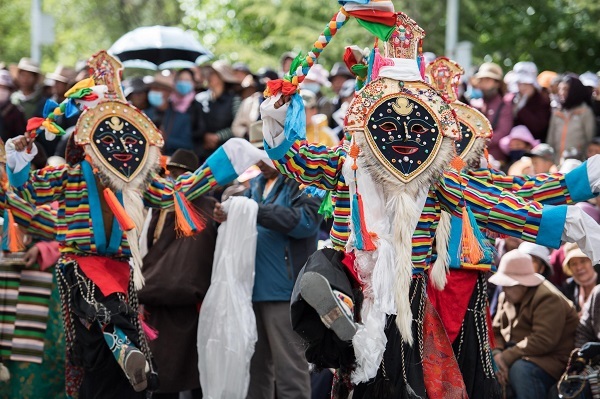 Tibetan Opera, aka Lhamo, is a theatrical play of Tibet with singing and masked dancing. It was formed in the 14th century and spread on the Tibetan Plateau. In the 17th century, it was separated from the religious rituals of the monasteries. The eight repertoires often performed are mostly originated from the myths and legends in Buddhist scriptures to persuade good and punish evil. Inherited the essence of Tibetan culture, Tibetan opera is an integral part of local life, showcasing its outlook, and reflecting people's thoughts and feelings.
Tibetan Opera, aka Lhamo, is a theatrical play of Tibet with singing and masked dancing. It was formed in the 14th century and spread on the Tibetan Plateau. In the 17th century, it was separated from the religious rituals of the monasteries. The eight repertoires often performed are mostly originated from the myths and legends in Buddhist scriptures to persuade good and punish evil. Inherited the essence of Tibetan culture, Tibetan opera is an integral part of local life, showcasing its outlook, and reflecting people's thoughts and feelings.
Tibetan Architecture is also an embodiment of Tibetan art. The architectural art of Tibet has reached a very high level, which seeks to balance the function and artistry, not only absorbing the ethnic architectural style of Han and other ethnic minorities but also retaining features and traditions of their own. Potala Palace is a typical representative of Tibetan architecture, with the sharp contrast of red, white and yellow colors on its exterior walls, as well as the layered construction method, all reflecting Tibetan architectural typical characteristics. >>See more about Tibetan Architecture
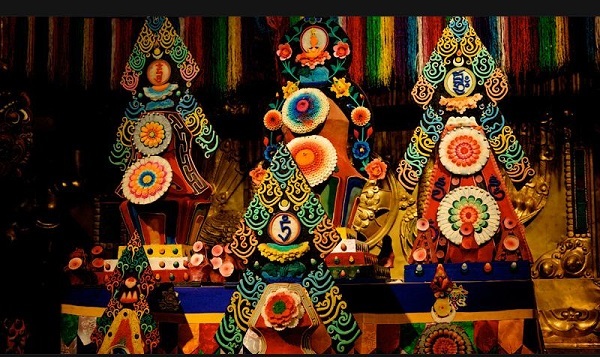 Tibetan Butter Sculpture originated from the Tibetan Bon religion. Artisans put a variety of mineral pigments in the butter, and made it into the base material and, at last, kneaded it into the shapes of various Buddha statues, figures, flowers, trees, birds, and animals manually. Butter Sculpture is a masterpiece of sculptures. >>See more about Tibetan Butter Sculpture
Tibetan Butter Sculpture originated from the Tibetan Bon religion. Artisans put a variety of mineral pigments in the butter, and made it into the base material and, at last, kneaded it into the shapes of various Buddha statues, figures, flowers, trees, birds, and animals manually. Butter Sculpture is a masterpiece of sculptures. >>See more about Tibetan Butter Sculpture
Tibetan Wall Art is a miracle of Tibetan art, which outlines changes in society on the plateau with crude, simple, and primitive painting methods and splendid colors. The murals originated from Tibetan rock paintings, which have a wide range of subjects, including all aspects of production and life. There are also many patterns depicting nature, animals, and plants, such as hunting, grazing, expedition, dancing, etc. As time changed, the form of rock painting gradually developed. Especially after the transfer of Buddhism into Tibet, rock paintings began to transform from cliffs and caves to murals, and the content was closely related to Buddhism.
Tibetan Cliff and Rock Carving are treasures of the ancient Tibetan cultural heritage and an important part of Chinese sculpture art, with a unique style and extensive distribution. Therefore, some people say that Tibet is a stone carvings art gallery and library without walls. The Mani stones scattered throughout Tibet are a concrete manifestation of the evolution of these ancient customs. >>See more about Tibetan Cliff and Rock Carving
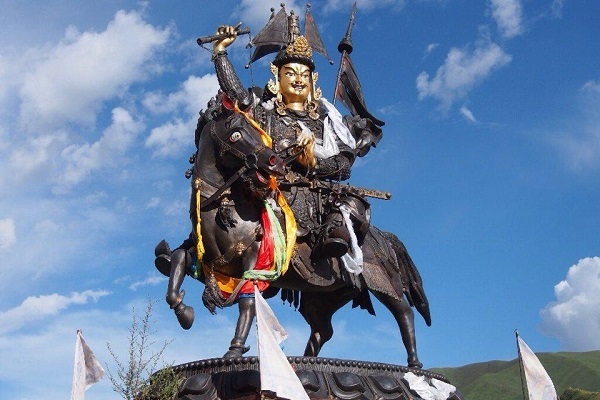 The Epic of King Gesar is the longest epic in the world and a representative of Tibetan literature. King Gesar is a widely known name throughout Tibet, yet a fictitious hero in Tibetan legend, not a real historical person. There are many miracles around the famous mountains and rivers related to him. His stories are orally sung and passed down by Tibetan folk artists. >>See more about King Gesar
The Epic of King Gesar is the longest epic in the world and a representative of Tibetan literature. King Gesar is a widely known name throughout Tibet, yet a fictitious hero in Tibetan legend, not a real historical person. There are many miracles around the famous mountains and rivers related to him. His stories are orally sung and passed down by Tibetan folk artists. >>See more about King Gesar
The recommended places to experience art and culture in Tibet are the Potala Palace and the Tibet Museum. The treasure hall of Potala Palace showcases a large collection of valuable artworks, such as seals, gifts, Buddhist classics, palm-leaf manuscripts, Buddha statues, thangkas, and Tibetan Buddhist items. One of the most precious treasures is the statue of Hevajra Tantra made in the 14th century. Tibet Museum is Tibet's treasure trove and the first modern museum, where you can not only appreciate the precious collection of Tibetan art but also learn about various Tibetan folk arts.
Email response within 0.5~24 hours.


